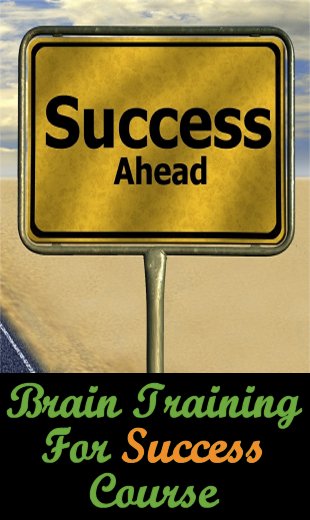The 4-Step Process For Making Smart Buying Decisions
Shopping – it’s something most of us have to do, on a regular basis.
Sometimes it’s fun, and sometimes it’s a boring necessity.
Either way, it makes sense to shop effectively, and this may be more true than ever given the current situation, since the coronavirus scare is still ongoing as I write this.
Unfortunately, a large percentage of Americans were already struggling financially before the policies enacted in response to this mess caused people to lose their businesses and their jobs.
So, how can you ensure that you spend your money wisely?
Here are the four key steps you should take when making purchases, and while you should ideally go through this process for everything, that’s probably unrealistic in most cases.
At the very least then, you should decide to follow these stages for larger purchases, and for items you truly need that you want to last for a while.
1. Identify Your Needs
The first step is to list down what it is you think you need.
At this stage, it’s vital you separate what you truly need from what you want.
Yes, you might want a luxury version of the item, but does it have features you will likely never use that a cheaper model forgoes? Or is it merely the prestige of the brand name that’s swaying you, which often offers no practical advantages?
You should also consider future needs, where appropriate. For example, you might think you need a flashy sports car, but if you know you might be starting a family soon, is that really the best choice, or would a family car meet your needs better?
Other factors you might want to consider may be to do with the ecological impact. Do you feel so strongly about the environment that you would rather than a product that is “clean” but has fewer of the features less “clean” products have?
Don’t forget too that you need to identify your budget. This figure should be realistic, and if you plan on exceeding it, you will need to have an excellent reason for doing so.
Once you’ve finished this step, you should have a list of needs and wants (clearly identified as such). This list should be in priority order, so that you know which features are the most important ones. That means if a product doesn’t satisfy some of the low-priority requirements, it’s not so important.
One common technique to help here is called the MoSCoW method, which classifies requirements as Must Have, Should Have, Could Have, and Won’t Have.
And you need to know how much you are willing and able to spend on the item.
2. Research And Finalize Your Decision
Once you have a clear list of what you need, it’s time to start doing some research.
If you skip this step, or skimp on it, the chances are you will end up buying something that is not what you really need, and that could cost you money.
Part of this research includes:
- Looking for all of the possible contenders by doing Internet searches, for example.
- Checking out the full list of specifications of the products you find, so you can compare them to your list of needs.
- Searching for reviews by other customers (but remember to be on the look-out for “fake” reviews, which are unfortunately an issue these days).
- Asking friends, family, and co-workers for recommendations.
A helpful tool during this step is a list of pros and cons. For each candidate you come across, you list down what’s good about it, and what’s bad about it. For example, one pro of a car might be that its safety rating is high, while a con might be that it doesn’t get many miles to the gallon.
Once you have identified the advantages and disadvantages of each option, you will be better able to assess whether it’s a good solution for you.
3. Reevaluate Your Options
This is a crucial step for several reasons:
- You may find one or more factors that you had completely forgotten to consider.
- You might realize that your priorities weren’t correct. For example, customer reviews might highlight the importance of a feature you had previously considered trivial.
- You might even discover that there are other products that would better meet your requirements.
The key point here is that you need to be willing to change your mind once you have more information.
4. Shop Around
Only once you are sure, or as sure as you can be, that you’ve covered all of the various needs you have and you’ve done as much research as you can, is it time to start looking around.
This is because there are deals to be had – either online or in person. And remember this might not only be about the list price, because one company might offer you a better guarantee than the next.
I know it’s tempting to buy from the first place you find, but you might be able to find a better price from the next company you come across.
This is also where negotiating skills can come in handy – but be aware that the sales people you will be buying from, especially with larger items such as card, are usually experts in this.
If you cannot bring the price down, can you, for example, get them to include other accessories or additional insurance?
What To Watch Out For
The above steps will stand you in good stead for many of the more important purchases you need to make, but there are potential problems you will encounter, including:
- Analysis paralysis. This is something with which I am familiar, both in my business and work life. The problem here is that you feel like you never have enough information to make a decision, so you don’t. You want to keep looking, just in case. This can often be a symptom of perfectionist tendencies, which are often closely related to procrastination. What you need to realize is that perfect information doesn’t really exist, so the question is, when do you have enough to make a decision?
- Impulse Buys. While I am not suggesting you should use this process to decide which candy bar to buy, because that would be a waste of time and effort, there will be occasions when you see something you hadn’t planned on buying but feel unable to resist. Apart from the obvious question of whether you can afford the item or not, you need to ask yourself whether you truly need it. Is it going to serve a useful purpose or is it the equivalent of eye candy? Resisting these purchases can be tough – retailers are well aware of buyer psychology and they know how to attract customers through presentation and advertising.
- Quality vs. Price. Sometimes, it makes economic sense to buy a more expensive product, but you cannot afford to do so, which in the longer term can end up costing you more money. In such a situation, it may be worth considering the option of borrowing the money you need (either from a financial institution or from somebody you know), because even taking account of any interest you might have to pay, it can still be cheaper overall. This excellent meme, which I saw on Facebook about a month ago, makes this point superbly:

Conclusion
I’m pretty sure most of us have bought items we later regretted, and in many cases, that’s OK provided you learn from the experience.
But when money is tight, it’s ill-advised to buy anything significant without at least first considering whether you need it, what features it absolutely has to have, which is the item that best meets your requirements, and whether you can afford it.
Unfortunately, these decisions are not always clear-cut. They are, of course, binary in one way – either you decide to buy something or you don’t. But there are usually so many factors that it’s not just a simple yes/no choice.
You need to weigh up different factors to arrive at what you believe to be the best solution. And, of course, this problem is made more complicated when there is more than one person involved. If you are buying a car for yourself, and you’re single, then it’s pretty much down to you. But if you are married and this is going to be your sole family vehicle, then you need to take into account the needs of everybody who will be using it.
Additional Resources
These are suggestions for those who wish to delve deeper into any of the above:







